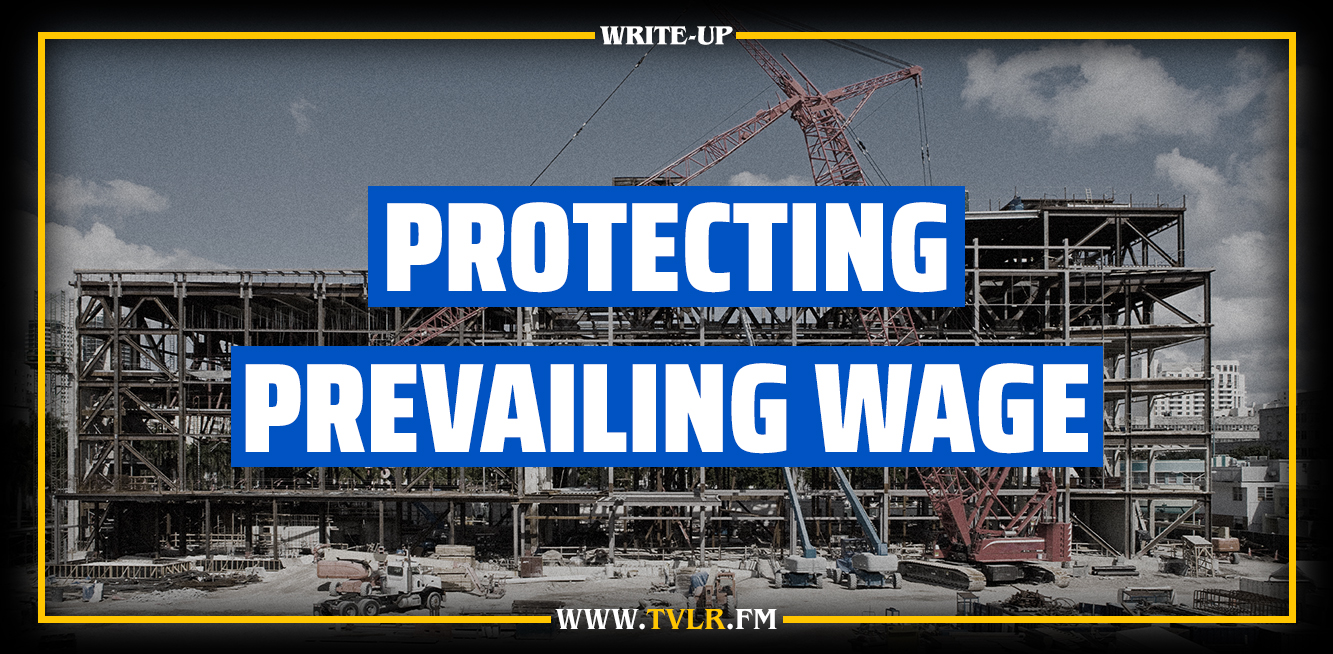ear the beginning of the year on The Valley Labor Report, Jacob Morrison had the opportunity to sit down with representative of the NorCal Construction Industry Compliance (NCIC) organization Dr. Larissa Petrucci to discuss ‘prevailing wage,’ a topic which is often not considered too deeply by most folks but, as Dr. Petrucci made clear in the interview, is of greater importance than it seems.
“The gist of [prevailing wage] is: do you want construction workers to make more money and do you want them to be safe, or do you not?” Jacob crudely summarized on the program before bringing Dr. Petrucci on. “And that’s not boring. That’s pretty relevant to not only construction workers but also to… people in their community, people who maybe care somewhat about people other than themselves.”
The discussion on prevailing wage was inspired by a research Dr. Petrucci compiled (alongside Frank Manzo and Dr. Robert Bruno) for the Illinois Economic Policy Institute (ILEPI), entitled “The Economic Impact of Prevailing Wage Law Repeals on Construction Market Outcomes: Evidence from Repeals Between 2015 and 2018,” which is available as a PDF document from ILEPI.
“Let’s talk about construction,” Dr. Petrucci began in the interview. “So construction — first of all: massive industry that highly affects all of us given that it’s… contributing to building the world around us that we live in… Construction has some unique components that… set it apart from other sectors or industries. So when we’re talking about public works construction projects, we’re talking about projects that are funded by the public through taxpayer dollars, that governments decide to award to… specific awarding bodies in order to build a project that is going to benefit the taxpayers. So that is really at the heart of these Public Works projects — making sure that money paid… by taxpayers is being used appropriately.”
Dr. Petrucci went on to describe the process for how a contractor applies for a project, which includes explaining why they are a good fit for the job as well as their estimate for what the job will cost.
“The way that it works in Public Works construction is that the lowest bidder pretty much automatically wins,” Dr. Petrucci continued, describing the process. “So what does that mean? It means that the contractor has all of the incentive to lower the cost as much as possible. And one way that we know employers are always trying to lower the costs is to squeeze the worker.”
This is where the prevailing wage system comes into play, which acts as a type of “minimum wage” mechanism uniquely for construction work, and ultimately it is intended to protect construction workers from wage-abuse (i.e. employers slashing worker wages to save a buck).
“It just is a way to determine what is the most common — or the ‘prevailing’ — wage in that local economy, and say that you know if you’re going to have a Public Works project, specifically, that’s paid for by taxpayers, let’s make sure that all the contractors are paying that same wage so they can’t come in and undercut wages.”
So you can see why the prevailing wage system is a crucial system for construction workers wanting to make sure they are not being underpaid for their labor. And it’s crucial to know this information because there is a growing push among our Nation’s leaders to repeal the prevailing wage system.
“[The push to repeal prevailing wage is a] short-sighted way to think about, okay, how do we save money and cut corners, without any recognition of the long-term impacts,” Dr. Petrucci explained.
And those “long-term impacts” are plentiful, and nothing to take lightly.
To learn more about the impacts of repealing prevailing wage, as well as how politicians are also trying to “cut corners” when it comes to construction site safety, watch the full interview with Dr. Larissa Petrucci on YouTube:
